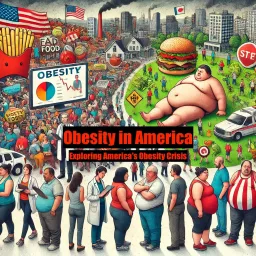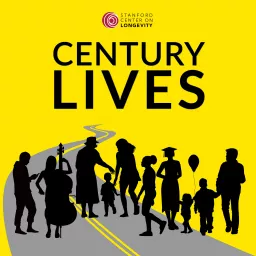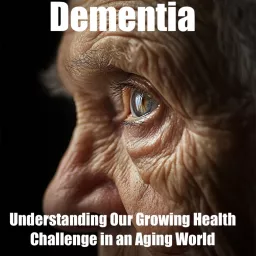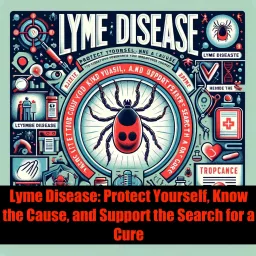Obesity in America

Obesity in America refers to the widespread and escalating public health crisis characterized by a significant rise in obesity rates among adults and children across the United States. As of 2022, approximately one-third of adults are classified as obese, a statistic that has more than doubled since the early 1990s, while childhood obesity rates have also alarmingly increased, with over 17% of children aged 2-19 reported as obese. This trend poses serious health implications, including heightened risks for chronic diseases such as diabetes, cardiovascular conditions, and certain cancers, making obesity a pressing concern for both individual and public health outcomes. The rise in obesity is attributed to a complex interplay of genetic, environmental, socioeconomic, and behavioral factors. Economic disparities disproportionately affect certain racial and ethnic groups, further complicating efforts to combat obesity. The built environment, characterized by limited access to healthy food options and opportunities for physical activity, significantly influences dietary habits and lifestyle choices. Public health initiatives have sought to address these disparities through community-based strategies, yet challenges persist, especially in underserved areas. Notably, the societal stigma surrounding obesity complicates the issue, contributing to negative self-perception among individuals and impacting their willingness to seek assistance. Historical mistrust of healthcare systems among marginalized communities exacerbates this dilemma, highlighting the need for culturally sensitive health communications and equitable access to care. Furthermore, the economic burden of obesity is substantial, with projected healthcare costs reaching nearly $1 trillion by 2030 if current trends continue, underscoring the urgency for effective intervention and prevention strategies. Overall, the obesity epidemic in America is not merely a health issue but a multifaceted crisis that necessitates comprehensive solutions that address the underlying social determinants of health. Collaborative community efforts and tailored interventions are essential to foster healthier environments and promote sustainable lifestyle changes, especially in vulnerable populations. Historical Context The issue of obesity in America has evolved into a significant public health crisis over the past several decades. Currently, approximately one-third of all adults are classified as obese, a figure that has more than doubled since the early 1990s. The prevalence of obesity among children has also seen alarming trends, with rates more than doubling for children aged 2-5 and tripling for youth aged 6-11 and adolescents aged 12-19 over the same period. As of the 2007-2008 National Health and Nutrition Examination Surveys, around 17 percent of children aged 2-19 years were reported as obese, with an additional 15 percent classified as overweight. The rise in obesity rates has been attributed to various social, economic, and environmental factors. Notably, the complexities of rural and urban settings demonstrate divergent challenges in addressing obesity. For instance, cultural differences in meal terminology, such as the use of "dinner" to refer to the midday meal in rural areas, necessitate tailored approaches in interventions aimed at promoting healthy family meals. Such regional distinctions highlight the need for localized strategies that resonate with community norms and practices. Furthermore, obesity is not merely a health issue but a social equity concern, as individuals from disadvantaged backgrounds are often disproportionately affected. Studies indicate that trends in obesity prevalence may be less favorable among racial and ethnic minority groups compared to non-Hispanic whites, with disparities widening over time. These patterns underscore the need for targeted interventions that consider socioeconomic status and cultural context to effectively combat the obesity epidemic. Efforts to address obesity have gained momentum, with various theories applied to mobilize community resources and develop intervention strategies. For instance, Community Organization Theory emphasizes the importance of community groups identifying common goals and mobilizing resources. This has led to the development of programs that target parents and families, as their influence on youth behaviors is critical in addressing childhood obesity. Overall, understanding the historical context of obesity in America reveals a complex interplay of factors that necessitate comprehensive and inclusive strategies to promote healthier lifestyles and reduce obesity rates nationwide. Statistics Prevalence of Obesity Recent data from the Centers for Disease Control and Prevention (CDC) indicate a troubling rise in obesity rates across the United States. In 2022, 22 states reported adult obesity prevalence at or above 35%, a notable increase from 19 states in 2021. This marks a significant shift, as a decade ago, no state had reached such high levels of adult obesity prevalence. The states with the highest rates include Louisiana, Oklahoma, and West Virginia, where more than 40% of adults are classified as obese. The Midwest and South regions show particularly high prevalence, around 36%, while the Northeast and West report approximately 30%. Socioeconomic and Educational Disparities The National Health and Nutrition Examination Survey (NHANES) data from 2011–2014 reveal disparities in obesity prevalence based on educational attainment. College graduates exhibited lower obesity rates (27.8% for women and 27.9% for men) compared to those with some college education (41.2% for women and 40.0% for men) and those with a high school education or less (45.3% for women and 35.5% for men). This pattern is consistent across various racial and Hispanic origin groups, although the differences are not always statistically significant, particularly among non-Hispanic black men. Notably, among non-Hispanic Asian and Hispanic men and women, educational disparities in obesity prevalence were less pronounced. Trends Over Time Analysis of temporal trends from 1999–2002 to 2011–2014 shows that while obesity rates have remained high, continued efforts are necessary to achieve targets set by Healthy People 2020, which aims to reduce age-adjusted obesity prevalence to less than 30.5% and address disparities in obesity rates across different demographics. Reverse Causality and Gender Differences Research suggests that the relationship between obesity and income exhibits a reverse causality, more pronounced among women than men. The standardized mean difference (SMD) for women is -0.16, compared to -0.07 for men, indicating a greater impact of obesity on women's income levels. This may be attributed to societal pressures and stigma associated with obesity, particularly for women, as well as varying societal expectations regarding body image. Causes of Obesity Obesity is a complex condition influenced by various factors that can be broadly categorized into genetic, environmental, societal, and behavioral elements. Understanding these causes is essential in addressing the growing prevalence of obesity in America. Genetic Factors Genetics play a significant role in the likelihood of an individual becoming obese. Research indicates that certain genes, such as the APOA2 gene, can predispose individuals to a higher body mass index (BMI) and contribute to obesity risk. However, the genetic predisposition to obesity is increasingly affected by environmental changes that promote weight gain, as noted by experts in the field. Environmental Influences The built environment in which people live has transformed significantly over the past several decades, leading to reduced physical activity and increased caloric intake. The shift towards more sedentary lifestyles, characterized by increased car usage and screen time, has led to a marked decline in daily physical activity. In 2020, only 24.2% of American adults met the recommended guidelines for physical activity, indicating a concerning trend towards inactivity. Furthermore, as of 2024, 91.7% of U.S. households own at least one vehicle, underscoring the reliance on automobiles for transportation. Dietary Habits American diets are often high in calories, largely due to the consumption of fast food and high-calorie beverages. Reports indicate that 36.6% of adults consume fast food on any given day, which contributes to excessive calorie intake. Additionally, many Americans do not follow a healthy dietary pattern, with insufficient nutrient intake and a preference for convenience foods that are typically low in nutritional value. The USDA has highlighted that, compared to previous decades, the average American now consumes a higher proportion of calories from refined grains and added sugars. Societal and Behavioral Factors Societal pressures and norms significantly affect eating behaviors and physical activity levels. Media influence, particularly among children and adolescents, can play a crucial role in shaping attitudes toward body image and health behaviors. Campaigns promoting physical activity, such as "Let's Move!" and the MyPlate initiative, aim to counteract the rising obesity rates by encouraging healthier lifestyles. However, mental health issues like anxiety and depression are also prevalent among individuals with obesity, complicating efforts to adopt healthier behaviors. Psychological Aspects The stigma surrounding obesity can lead to negative self-image and emotional eating, further exacerbating the problem. The relationship between mental health and obesity is bidirectional; mental health challenges can lead to weight gain, while obesity can negatively impact mental well-being. Thanks for listening and remember to like and share wherever you get your podcasts.































